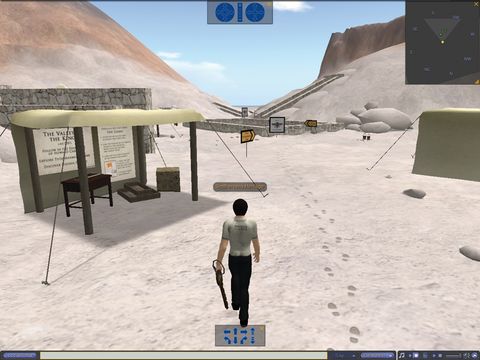TechRadar Verdict
A great way to explore the Valley of the Kings without having to actually go exploring. We can see this kind of application being used widely in the classroom or for school research projects
Pros
- +
Good idea
- +
Nicely built world
- +
Interesting artefacts
Cons
- -
Lacking in design finesse
Why you can trust TechRadar
Before the web came along, virtual environments seemed like the next big thing in interface technology. We now have the processing power to do everything those old-school futurists dreamed about: telepresence, immersive filesystems, cyberspace applications… yet it's still gamers that make most use of virtual worlds. Heritage Key VX may end up changing all this, though.
It's a mainstream application of a once niche feature that reminds us why we all thought it was such a good idea. While Heritage Key is predominantly an educational website aimed at amateur historians and fans of archaeology, its heart is the 3D virtual exhibit.
Peppered through the pages are buttons exhorting you to 'Go Virtual'. Take up this invitation, and the site launches an external application that connects you to a 3D museum. There you can create an avatar, communicate with other users in real-time and explore.
Heritage Key's virtual component is built using technology pioneered in Second Life, though developers Rezzable are careful to distance themselves from Linden Lab.
The worlds on offer have been developed on OpenSimulator, a hosting platform for virtual worlds that's compliant with Second Life protocols for client-to-server communication. Environments are viewed using a custom version of the open-source SL Viewer application, right down to the pop-up box saying 'Loading Second Life' as it loads.
When exploring Heritage Key's virtual world, you have a very pervasive feeling that you're in Linden Lab's infamous alternate reality. It's a cut-down version, but it's still recognisably the same software with the same control system, features and level of detail.
It shares the same strengths and weaknesses as the Second Life protocol platform that it's built on, too. That includes a control system that's counterintuitive when compared with modern first-person shooters or MMOs and a glitchy rendering system. For example, sit down in the tutorial area and you'll end up knee-deep in the floor.
Walk with the kings
You're not actually in Second Life, though – the world's running on its own, standalone OpenSimulator grid. Heritage Key currently offers just one themed world, King Tut Virtual, though further 3D environments are planned.
You can tour a virtual archaeological dig, take a walk round simulated museum exhibits and even sneak a peek at Egyptian artefacts in their proper historical setting. It's churlish to be too critical of the platform when there's true innovation in the kind of content offered.
We can only think of a handful of successful enterprises of a similar ilk. Twinity – an attempt to model real cities, with virtual versions of Berlin and Singapore already up and running – is one that comes to mind. But though Twinity models genuine streets, buildings and even people, it doesn't offer what Heritage Key VX can: a close-up view of Tutankhamun's Gold Death Mask.
The real artefact is too fragile to move from the Egyptian museum in Cairo, but here you can look at an in-world 3D model (built from images taken by award-winning photographer Sandro Vannini) from any angle. It's just one of many rare items you can explore in the exhibit.
Rezzable is responsible for several similar worlds in Second Life, including online shops, clubs and galleries. It's a brave attempt to harness the state of the art and appropriate it for the mainstream.
In the context of the Heritage Key site, it's an interesting diversion and a clever and involving way of presenting historical and archaeological data. Is it a compelling virtual world, though? For the moment, it's too small to take up too much of your time.
Follow TechRadar Reviews on Twitter: http://twitter.com/techradarreview

